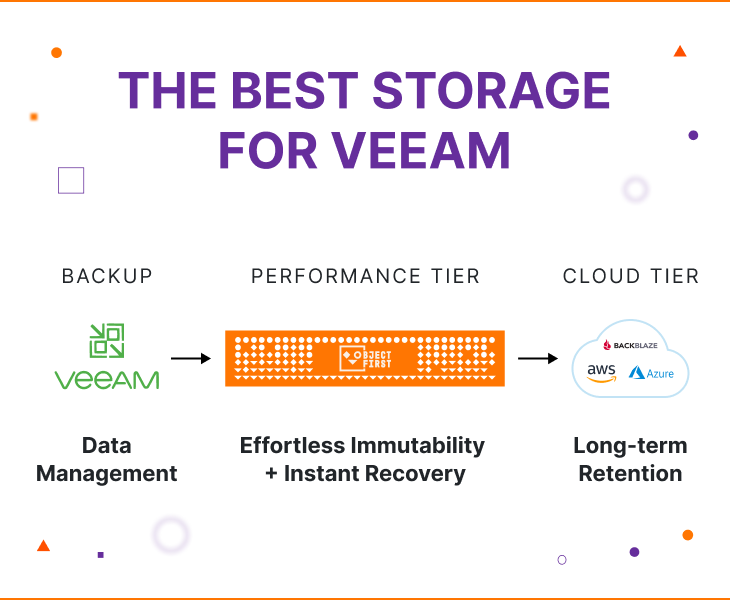Firstly, if you read our most recent blog series about various storage platforms, thank you. If you haven’t, I recommend checking out the third and final piece covering object storage and how it mainly benefits cloud users today (and very soon Object First’s on-premises customers as well!).
Tangentially related to that blog post, a recent report commissioned by Forrester titled “Five Keys To Innovating Faster with Cloud” revealed that only one-third of IT decision-makers have a formal cloud operations plan and need to prioritize aligning their cloud migration with their business vision and value. The report states that tech leaders often go back and forth on cloud choices and build out their cloud plans in pieces rather than developing a cohesive cloud strategy focused on delivering business value.
In order to make cloud adoption successful, IT leaders have to analyze how much business value is derived from a private cloud platform versus leveraging a public cloud vendor or changing the form factor and operating cloud-native applications on-premises. The report found 62% of decision-makers said “modernizing with cloud and new computing architectures” would simultaneously be their top hardware, IT infrastructure, and IT operations priority over the next 12 months, but went on to explain that defaulting to the cloud as the first thought disregards the unique strengths that other platforms and infrastructures have to offer.
In truth, standardizing on the cloud for everything can cause diminished UX, performance issues, compliance violations, latency, and supplier concentration risks.
It also can mean a very large bill should you ever need to bring your data back-on-prem or to a different cloud location.
This is why having on-premises object storage-based backup for data is beneficial to achieve maximum business value.
When talking with folks at trade shows, I often ask: “what if you could have both the agility and immutability offered by cloud storage with the security and control of an on-prem storage appliance?” They almost unanimously assert that such a solution would be a boon for their IT ecosystem. With further conversation, I always learn they are teetering between deciding on going all in on the cloud or buying newer, more expensive on-prem storage. This decision is truly what drove us to innovate and build our immutable, out-of-the-box solution.
Object First is primed to help the previously mentioned 62% of decision-makers make a really easy decision. When Veeam users utilize Object First as their primary backup storage target, they simplify their day-to-day operations while ensuring their backups are faster and more available for recovery than ever without giving up cloud security features like object lock. This also allows them to continue to take advantage of the cloud, but affordably, by utilizing cloud storage as the perfect off-prem backup for long-term-retention fulfilling their need for “3-2-1 ransomware resiliency.”

Cloud decision-making need not be complex when picking the right storage for Veeam. Users can have the best of both worlds by choosing Object First as their immutable, simple, powerful, and affordable primary backup storage target, while still optimizing for long-term affordable data retention within the cloud.